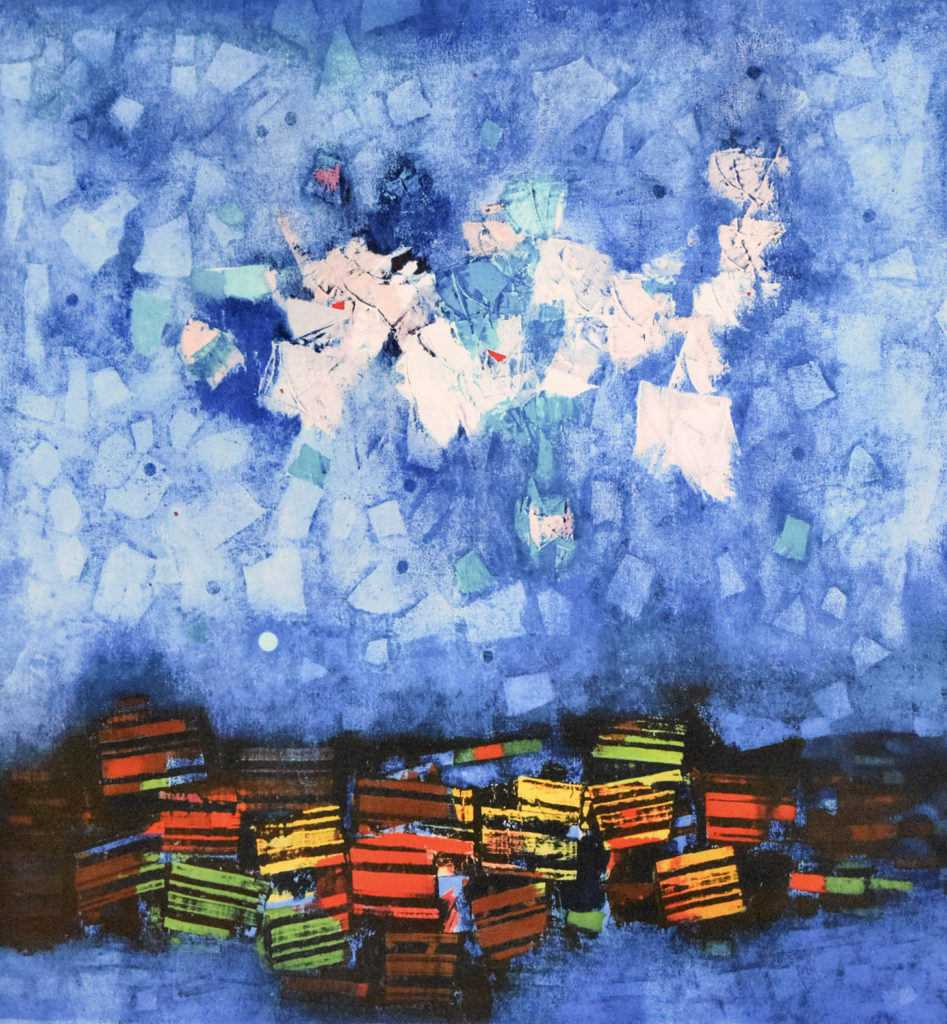To the Morning Star
Mordecai Ardon (Poland 1896–1992 Jerusalem)
Jerusalem, 1973
Lithograph, h. 28 3/8 h. x 25 ½ w. in.
Cincinnati Skirball Museum, gift of Nancy M. Berman and Alan J. Bloch, 2018.7
Mordecai Ardon was born in the small Polish village of Tuchow. After World War I he left for Paris and like many Russian and Polish artists only got as far as Berlin where he enrolled in a preparatory Bauhaus class. At the Bauhaus, the German art and design school, he was influenced by Paul Klee, his teacher and friend. When the Nazis came to power in 1933, he immigrated to Israel. In leaving Europe he not only lost the stimulating human contacts but also the inspiring museums and exhibitions. In addition, the landscape was different, the sky had a blinding light, and the sunsets were overwhelmingly colorful. His reaction was to retreat to his house. The pictures he painted during the first years in Jerusalem were brooding portraits and sunless landscapes. The works revealed a continuous effort to maintain the link with the masters of the past and above all with Rembrandt. Only after a while did he find his own unique style that combined the mysticism of the Kabbalah with the inventions of contemporary abstract art.
This work is typical of Ardon’s ability to convey the awe-inspiring primeval nature of the land. Sky and land, mountains and clouds are depicted with bright, intense color, resulting in a composition that is expressive of the inner mystery and timelessness of the landscape.

